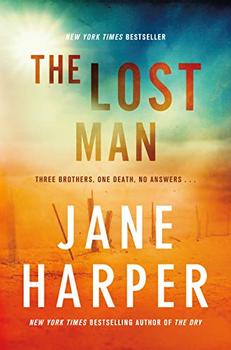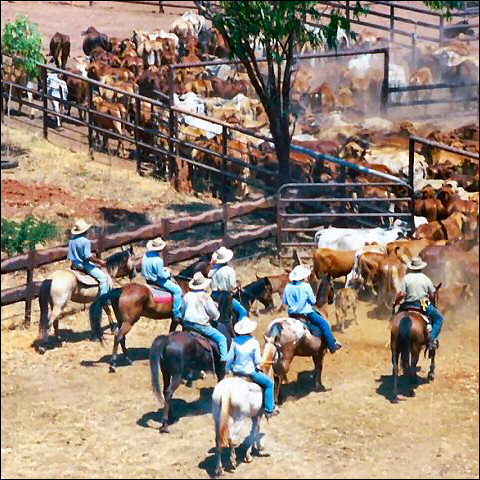Summary | Excerpt | Reading Guide | Discuss | Reviews | Beyond the Book | Read-Alikes | Genres & Themes | Author Bio

This article relates to The Lost Man
 Jane Harper's The Lost Man takes place on a cattle station in the Australian Outback. Cattle stations function quite differently than American or European beef cattle ranches. Many are extremely large; the territory devoted to raising the livestock is generally hot and arid, producing little vegetation, and so an immense area of land is required to support relatively few head of cattle. There are over 100 cattle stations in Australia that are larger than the biggest American ranch. Because the acreage is so immense and the herd so spread out, rounding up the animals can take weeks. Ranch hands no longer exclusively ride horses to accomplish this, frequently relying on ATVs, dirt bikes, or even light aircraft to spot the cows.
Jane Harper's The Lost Man takes place on a cattle station in the Australian Outback. Cattle stations function quite differently than American or European beef cattle ranches. Many are extremely large; the territory devoted to raising the livestock is generally hot and arid, producing little vegetation, and so an immense area of land is required to support relatively few head of cattle. There are over 100 cattle stations in Australia that are larger than the biggest American ranch. Because the acreage is so immense and the herd so spread out, rounding up the animals can take weeks. Ranch hands no longer exclusively ride horses to accomplish this, frequently relying on ATVs, dirt bikes, or even light aircraft to spot the cows.
Because of the stations' size and remoteness, life can be very isolated; often the next human settlement is more than a day's drive away. Some stations have consequently come to resemble small towns out of necessity, with schoolrooms for the children of the owners and workers, a general store to provide essentials, and sometimes an entertainment center or bar. Since 1951, many children living in remote areas of the Outback have received their school lessons via Australia's School of the Air program, which originally delivered lessons by two-way radio, and now via the internet using satellite connections. Electricity is provided by solar cells or via a generator, and internet and television accessed by satellite. The stations frequently have a dirt airstrip as well, so that small planes can land to deliver mail and supplies.
Employment on a cattle station is considered one of the world's toughest jobs; everyone works from sunrise to sunset, often seven days a week. It's also Australia's most dangerous profession, producing more deaths and injuries per year than any other job. A hand, sometimes called a "jackaroo" or "jillaroo," may perform domestic chores like cooking and cleaning, or tougher outdoor work, such as mustering cattle or fixing fences. The stations of Australia's Northern Territory alone employ about 1,800 individuals.
During the dry season, the time of year when cattle are typically rounded up, nearly all hands are required to venture into the Outback, sleeping outdoors on the ground for weeks at a time. In addition to simply gathering the herd together, the cattle need to be branded, checked over by a vet in some cases, and the animals going to the slaughter must be separated from the rest.
It is quite common for backpackers and others seeking an extended stay in Australia to pursue a holiday work visa, and many of the less skilled positions (cooks, cleaners, maintenance workers, etc.) on a cattle station are filled by these temporary workers. If you are between 18-30 years old and a citizen of one of about fifty countries that have a reciprocal agreement with Australia (including the U.K., U.S., and Canada), you can apply for a holiday work visa for $440 AUD, and if accepted, you will be granted 12 months of residency in Australia (some other restrictions apply). Visit the Australian Government Department of Home Affairs for more information and to fill out an application.
by Kim Kovacs
Northern Territory cattle station, courtesy of NT Travel
Filed under Places, Cultures & Identities
![]() This "beyond the book article" relates to The Lost Man. It originally ran in February 2019 and has been updated for the
December 2019 paperback edition.
Go to magazine.
This "beyond the book article" relates to The Lost Man. It originally ran in February 2019 and has been updated for the
December 2019 paperback edition.
Go to magazine.
Your guide toexceptional books
BookBrowse seeks out and recommends the best in contemporary fiction and nonfiction—books that not only engage and entertain but also deepen our understanding of ourselves and the world around us.